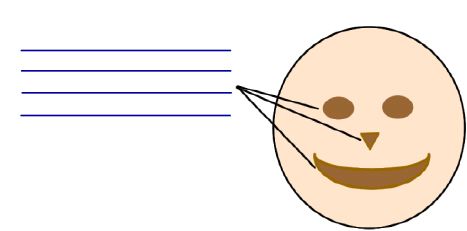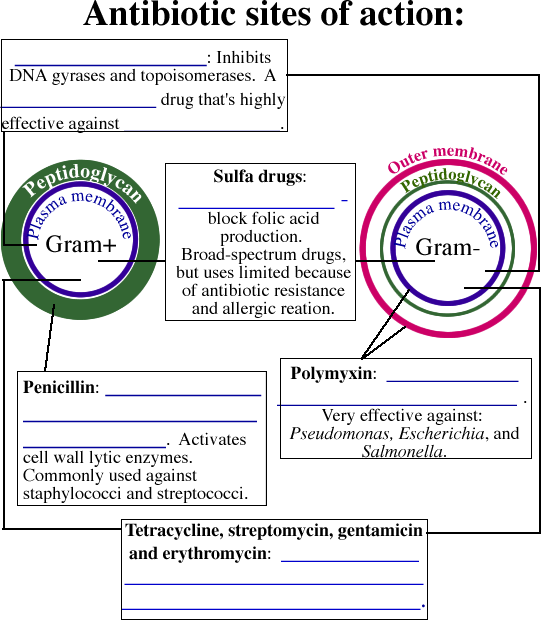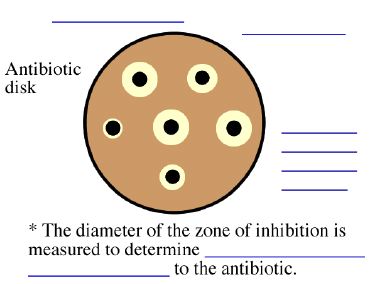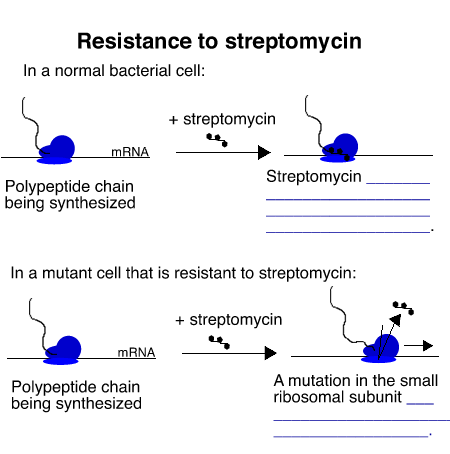Lecture # 8: Control of Microbial Growth
I. The Lethal effects of ultraviolet light.
A. UV light is a short wavelength (~10 to 400 nm), high-energy form of radiation that harms or kills most bacteria by ___________________ _____________.
B. When DNA is exposed to UV light, the weak hydrogen bonds between Thymine (T) and Adenine (A) __________________ and a stronger covalent bond forms between adjacent __________________ on the same strand. These are called __________________________.
C. Thymine dimers inhibit accurate ________________________ ___________.

D. Accurate and complete DNA replication and transcription are ___________________ to the survival of bacteria. Thus, bacteria have evolved mechanisms to repair these thymine dimers.
1. _____________________ (light repair)
- The photoreactivation repair enzyme (______) is activated by _______________________.
- PRE uses blue light to ____________ covalent bonds between thymine dimers.
- After these covalent bonds are broken the hydrogen bonds naturally reform.
2. ____________________________________________
- An __________________ called UvrABC breaks
the sugar phosphate backbone of the DNA strand near the dimer on each side.

- The H-bonds between the base pairs are broken and a segment of DNA ~12 nucleotides long is ____________.

- DNA polymerase recognizes the 3`OH primer and _______________________________.

- DNA ligase ____________________ in the sugar phosphate backbone
*If bacteria survive exposure to UV light they are probably using one of these mechanisms of repair.
IV. Because of the harmful effects of UV light on bacteria, we can
use it to _________________ things. Despite the high energy of
this form of radiation, it is not very penetrating. Thus, it can only
sterilize _________ _____________ (e.g. surfaces in operating
rooms, labs, and cold room lockers)

Today’s LAB
-Spread Micrococcus luteus on a TSA plate.
-Cut out a fun tin foil shape and place it on top of the agar.
-Expose the plate to UV.
-Those cells under the foil __________________________ because
the UV can’t penetrate the foil, other cells will be killed.
-Don’t look directly at the light and don’t leave your skin
underneath the light.
V. Kirby Bauer - A technique that demonstrates antimicrobial sensitivity
patterns. Used to test the __________________________________________________.
A. _________________________________ first discovered antibiotics
when he was observing a plate of Staphylococcus aureus that
was contaminated with a Penicillium. He noticed that around
the Penicillium the growth of Staphylococcus aureus was
_________________. The inhibition was caused by ___________________,
an antibiotic produced by Penicillium.
B. Antibiotic = a substance that is ___________________________________
______________________________________.
-Many ____________________________ secrete antibiotics.
(Actinomyces, Streptomyces, and Bacillus)
-Some ______________ such as Penicillium produce
antibiotics.
-This is often a form of biological ___________________ between
microbes.
C. Bacteriostatic vs. Bactericidal
1. Bacteriostatic agents _____________________________
the growth and reproduction of bacteria.
2. Bactericidal agents ______________ the target bacteria.
3. Some antibiotics are bacteriostatic and some are bactericidal.
The effect of an agent ________________ _______________________________,
it may be cidal for one species and static for another (Prescott
text).
D. Selective toxicity- The ability of a substance to kill
one ____________________ organism but not another.

_________________ bacteria are susceptible to all antibiotics.
It is therefore important that the pathogen of interest is __________________________________
and the ______________________________________________________________
is identified using the _____________________________________.
E. Kirby Bauer Technique: place small paper disks (impregnated
with antibiotics) onto a Mueller-Hinton agar plate that’s been
inoculated with the bacteria of interest.
1. As the disks absorb water, the antibiotics ____________________
and if effective will inhibit the growth on the plate around
them.
2. The result is a lawn of bacterial growth with ___________________
_______________________ around the discs.
3. The ______________________________ for an antibiotic is
directly proportional to the sensitivity of the isolate for that
antibiotic.
4. You cannot directly compare zone sizes between different antibiotic
discs because they ______________________________________.
Instead they are compared to controls.

Demonstration of confluently inoculated agar plate
IV. Microbial Genetics: Antibiotic Resistance: Isolation
of Drug Resistant Mutants
A. Mutation- Permanent __________________________________
in the genetic material
1, __________________________________- random error made
by DNA polymerase during replication. Bacteria have a low rate of
_____________________________________ (approximately 1 in
10 million to 10 billion). Since bacteria can be grown to large
numbers we can observe these rare events.
2. Induced Mutation- physically altering the DNA with ___________________________________.
3. Although mutations often cause detrimental changes,
sometimes a mutation leads to a ____________________ ______________________
(e.g. the ability to live in the presence of an antibiotic).
4. How would we isolate a mutant bacterial cell with
the ability to live in the presence of an antibiotic such as streptomycin?
________________________________________________ _______________________________________________.
B. ________________________________ ________________________but
they do select for them.

|







